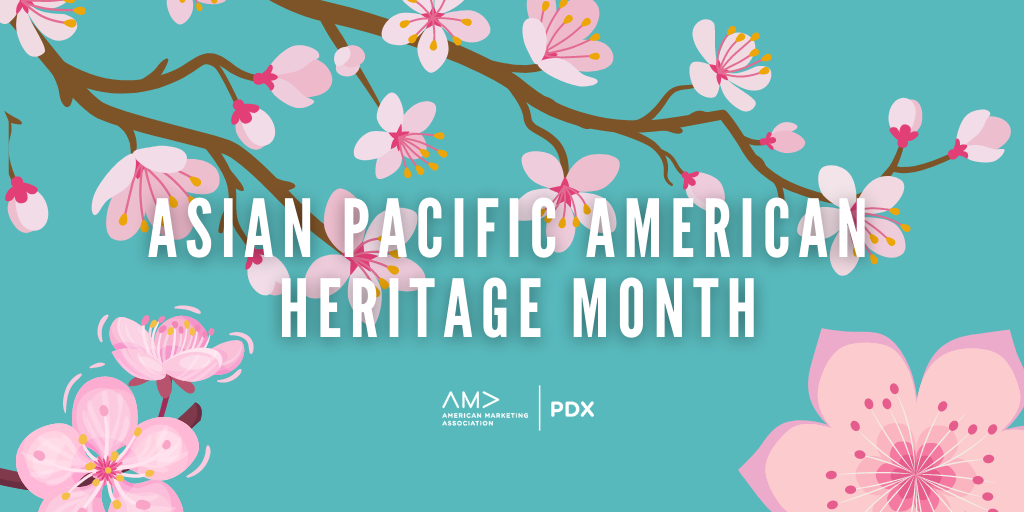May is Asian Pacific American Heritage Month
Asian Pacific American Heritage Month (APAHM) is a month-long observance in May that honors the history, achievements, and contributions of people of Asian, Native Hawaiian, and Pacific Islander (AANHPI) descent in the United States. The month was selected to commemorate the immigration of the first Japanese to the United States on May 7, 1843, and to mark the anniversary of the completion of the transcontinental railroad on May 10, 1869. In 1990, President George H. W. Bush and Congress voted to expand the celebration from one day to a full month.
When commemorating APAHM, it is important to understand exactly who the community is made up of and the distinction between Asian and Pacific Islanders. The largest continent in the world, Asia consists of 50 countries, and it’s made up of a little more than 4 billion people. According to the World Bank, Pacific Island member countries have a combined population of about 2.3 million people. The U.S. Census Bureau classifies Asians as “having origins in any of the original peoples of the Far East, Southeast Asia, or the Indian subcontinent,” including (but not limited to) China, Japan, Thailand, Malaysia, Korea, India, Cambodia, Vietnam or the Philippines. Pacific Islanders are people whose origins belong to Polynesia, Micronesia, and Melanesia. This classification includes (but is not limited to) Native Hawaiian, Samoan, Tahitian, Guamanian, Fijian and Papua New Guinean people.
According to the Asian Pacific Institute, the term AANHPI (other variations include API and AAPI) includes “all people of Asian, Asian American or Pacific Islander ancestry, who trace their origins to the countries, states, jurisdictions and/or the diasporic communities of these geographic regions.” The term “Asian American” was first coined by student activists in 1968 to identify Asian groups during a time when Americans used the derogatory term “oriental” to refer to Asians in the United States. Under the U.S. Census Bureau, that term officially evolved to “Asian Pacific Islander” in the 1980s and early 90s. Later on in 1997, the White House Office of Management and Budget broke the terms “Asian” and “Pacific Islander” into two separate racial categories.
The past year has particularly magnified the ongoing struggles faced by the API community in the U.S., which dates back to a long history of injustice. This history includes the Page Act of 1875, the Chinese Exclusion Act of 1882, the incarceration of Japanese American citizens during World War II, the murder of Vincent Chin, the mass shooting of Southeast Asian refugee children in 1989, and the targeting of South Asian Americans, especially those who are Muslim, Hindu, or Sikh, after 9/11. The disproportionate impact of COVID-19 and the rise in hate crimes against the API community serve as a grim reminder of the ongoing plight for racial justice.
At AMA PDX, diversity, equity and inclusion are at the heart of our values as an organization because marketing is for everyone. We know that we’re stronger as an organization and as a marketing community when people from various backgrounds, experiences and perspectives are included, heard and empowered. Join us this month and all-year-round as we commemorate Asian Pacific American Heritage Month.
Interesting Facts:
22.9 million
The estimated number of Asian alone-or-in-combination residents in the United States in 2019 (2019 Population Estimates)
1.6 million
The estimated number of Native Hawaiian and Other Pacific Islander alone-or-in-combination residents of the United States in 2019 (2019 Population Estimates)
5.2 million
The estimated number of the Asian population of Chinese, except Taiwanese, descent in the United States in 2019. The Chinese (except Taiwanese) population was the largest Asian group, followed by Asian Indian (4.6 million), Filipino (4.2 million), Vietnamese (2.2 million), Korean (1.9 million) and Japanese (1.5 million) (2019 American Community Survey, 1-year estimates)
607,010
The number of Native Hawaiian residents of the United States in 2019. The Native Hawaiian population was the largest detailed Native Hawaiian and Other Pacific Islander (NHPI) group, followed by Samoan (204,640) and Guamanian or Chamorro (160,773) (2019 American Community Survey, 1-year estimates)
54.6%
The percentage of the Asian alone-or-in-combination population age 25 and older who had a bachelor’s degree or higher level of education in 2019.
23.8%
The percentage of the Native Hawaiian and Other Pacific Islander alone-or-in-combination population age 25 and older who had a bachelor’s degree or higher in 2019.
577,835
The estimated number of Asian-owned employer firms in the United States in 2018 (2019 Annual Business Survey, data year 2018)
6,653
The estimated number of Native Hawaiian and Other Pacific Islander-owned employer firms in the United States in 2018 (2019 Annual Business Survey, data year 2018)
Other Relevant Facts:
Chinese, South Asian Indian and Filipino
These groups make up the majority of AAPIs, making up 22%, 20% and 18% of the total Asian American population, respectively. China and India have been the number one and number two sources of U.S. immigration (2018 American Community Survey 1 Year Estimates Asian Alone or in Combination)
$1.3 trillion
Asian Americans’ buying power (Nielsen, BLS Consumer Expenditure Survey, 2019)
Housing, personal insurance and pensions, education and food
Areas that Asian Americans spend more in (Nielsen, BLS Consumer Expenditure Survey, 2019)
Healthcare, tobacco and smoking, alcoholic beverages and personal care
Areas that Asian Americans spend less in (Nielsen, BLS Consumer Expenditure Survey, 2019)
Podcasts
A convenient, portable and easy way to consume the most desirable and relevant niche content among Asian Americans. Their top podcast genres are: technology, science, business, news and society/culture ( Nielsen Scarborough Podcast Buying Power, November 2020 (Listeners Only) Adults 18+)
95%
Asian Americans are more likely to have used the Internet for technology news than the general population (Nielsen Scarborough USA+ 2019 Release 2)
Digitally connected
Asian Americans are the most digitally connected ethnic community in the U.S. across more devices (Nielsen Total Audience Report, March 2021)



